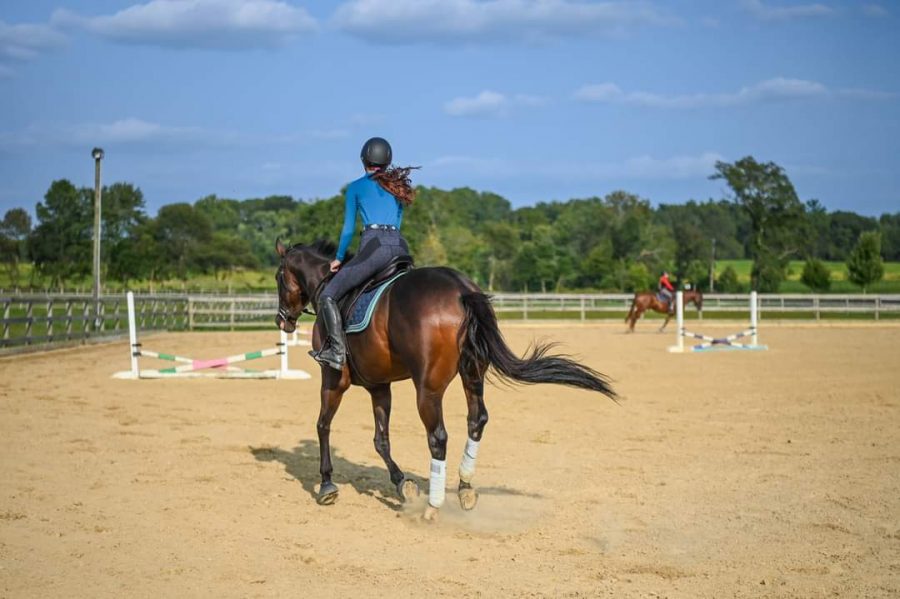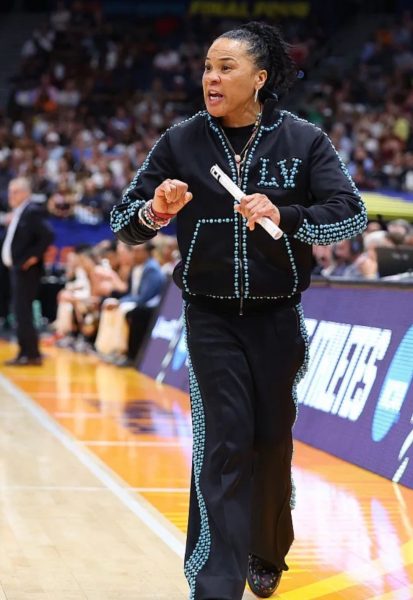NCAA Emerging Sport: Equestrian
The NCAA has officially labeled equestrian as an emerging women’s college sport.
Anna competes at a recent equestrian competition with her horse.
The NCAA is the collegiate athletic governing body. According to the Encyclopedia Britannica, it is officially defined as the “organization in the United States that administers intercollegiate athletics.” The association manages players, coaches, teams, and scholarships throughout colleges nationwide.
The NCAA is most popularly known due to college football games and March Madness, the NCAA Division 1 basketball tournament. March Madness generates national bets and attention towards the association, but the NCAA is not just for basketball.
It features dozens of less known men’s and women’s sports. The sports range from gymnastics to rowing to lacrosse and more, but I’m most focused on a more recent addition to the NCAA’s emerging sports program: Equestrian.
Yes, a controversial one. Many people believe that horseback riding is not a sport, however the NCAA has officially labeled it an emerging women’s college sport since 1998.
This means that the sport is smaller but still fully sanctioned with the association. As of now, only Division 1 and Division 2 teams can officially exist under NCAA sanction for equestrian competition.
The recruitment process for an equestrian athlete is pretty much the same as that of any other NCAA Athletes. You need to complete recruitment questionnaires, attend college fairs, tour schools, and meet teams in the same way as each other sport within the association. Additionally, you must be approved through the NCAA by sending your transcript, SAT scores, and resume.
Schools can offer scholarship money for riders to become members of their teams, but since the sport is smaller, it is less common. NCAA Equestrian teams also have strict GPA Regulations and grade standards. They practice regularly and work out as a team outside of their practices.
There’s been a recent shift in traditional horseback riding competitions towards being about money, like many other aspects of the equine industry. Rather than competing on level ground, it becomes a popularity contest for who has the most expensive horses, equipment, trainers, or is friends with the judge.
The intercollegiate format of equestrian competition is much more equalized and is based on skill, which is commendable. Rather than competing on your own horse, college athletes are assigned the name of a random horse(s) and then asked to complete the competition on it. This subtracts the money factor and showcases a rider’s ability to adapt to an animal on short notice.
According to the governing board, the National Collegiate Equestrian Association (NCEA), riders are judged on factors such as, “consistency on course, smoothness, flow from jump to jump,” “accuracy and overall position of the rider,” “seat of the rider and the correctness and effectiveness of her aids,” and “ability to execute a prescribed set of maneuvers with precision.” The focus is more on the current situation of riding the new horse rather than any pre-existing bias.
This creates a highly competitive atmosphere within the sport, but the level of skill riders cultivate lasts a lifetime.
The NCEA prides itself on “providing collegiate opportunities for female equestrian student-athletes to compete at the highest level, while embracing equity, diversity and promoting academic and competitive excellence,” and they are working towards achieving this!








